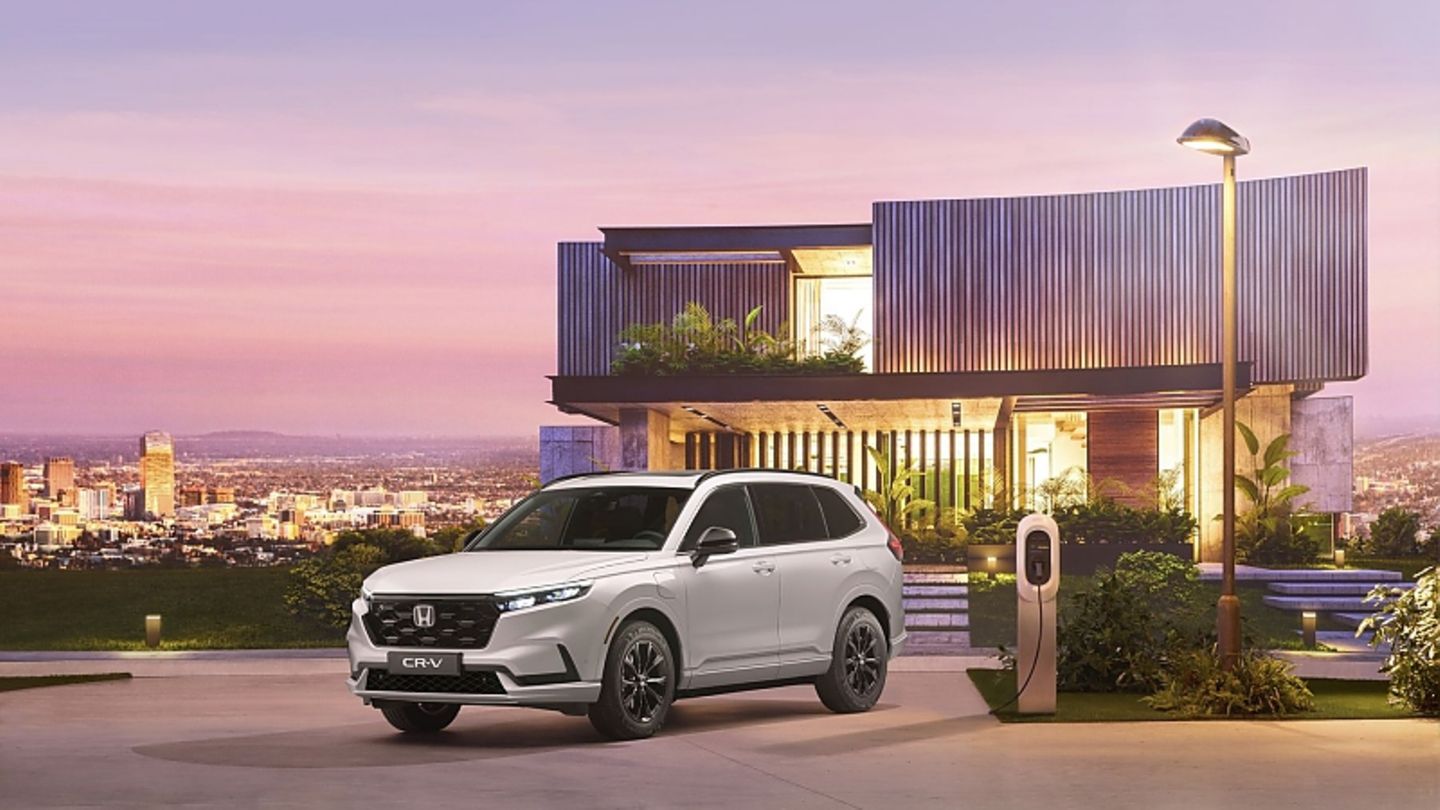Honda completes its model portfolio with the crossover ZR-V, which focuses primarily on the sporty card. Meanwhile, the larger CR-V gets a new plug-in hybrid drive through the facelift.
If you look at the front of the new Honda ZR-V, you see an interesting mixture. The grille is reminiscent of an Aston Martin and the signature of the daytime running lights has something of Skoda. At least the grille gives a very good indication of the target group of the crossover. It is intended to appeal primarily to younger drivers who like to be more dynamic on the road. Not only that: the ZR-V ranks between the HR-V and the CR-V and thus closes an important gap in the range of the Asian car manufacturer. “The model combines a high level of suitability for everyday use with outstanding comfort, an attractive design, sporty dynamics and our extraordinary e:HEV hybrid drive, making it a perfect addition to our European model range,” says Yutaka Kato, ZR-V Large Project Leader.
The ZR-V adopts the Civic’s e:HV full hybrid powertrain, with which it also shares some other technology. That means around 135 kW / 184 hp and has a maximum torque of 315 Newton meters. The highlight of this hybrid is that the interaction between the petrol engine is turned upside down, the electric motor is responsible for propulsion, while the combustion engine acts as a generator, which, according to Honda, has advantages in terms of efficiency. To ensure this, the two-liter, four-cylinder operates in the Atkinson cycle, in which the fuel is injected into the combustion chambers several times at high pressure. The thermal efficiency of the combustion engine is an impressive 41 percent.
The 1.5-kilowatt-hour battery is responsible for recuperation and temporary storage of the energy. The stepless E-CVT automatic regulates the torque by varying the current between the generator and the electric motor. Thanks to the interaction of battery and automatic transmission, the Civic should be able to drive up to 90 percent electrically in city traffic, which should result in consumption of less than five liters per 100 kilometers. However, Honda even speaks of an “exciting driving experience” with the ZR-V. It will be interesting to see how the Asian technicians will realize this project. A trump card is said to be the chassis with direct sporty steering, which is derived from the Civic and CR-V, has a multi-link rear axle and is intended to enable dynamics that are familiar from sporty hatchbacks. However, comfort should not be neglected.
The interior continues with the similarities between the two technology brothers. Like the Civic, the touchscreen measures nine inches and several USB ports help to charge smart devices. Foam-coated surfaces convey a haptically valuable impression and the trunk offers enough storage space with a maximum capacity of 1,291 liters, even if the volume is not record-breaking.
Something is also happening with the Honda CR-V. If desired, the SUV can now be converted into a part-time electric vehicle and will be fitted with a PHEV drive train. Interestingly, the CR-V e:PHEV uses the same components as the full hybrid e:HEV. This means that the 2.0-liter four-cylinder combustion engine operates in the Atkinson cycle and, in combination with an electric motor, provides propulsion. Only the battery is now significantly larger than in the e:Hev and now takes the CR-V purely electrically up to 81 kilometers. According to Honda, the batteries are fully charged again after 2.5 hours.
The additional drive variant is not the only innovation in the CR-V, which also comes in a different dress to compete against the VW Tiguan. The CR-V is impressive, even if the taillights still exude a touch of Volvo. The interior is rather classic, you won’t find a monstrous touchscreen and all traditionalists will be happy about the clearly assigned buttons and levers. Just like the extra space that comes with the larger body. The wheelbase has increased by four centimeters and the rear legroom has increased by 16 millimeters. Almost more important is the fact that the rear backrests have an adjustment angle that is 10.5 degrees larger. This means that the upright schoolboy sitting position is a thing of the past and you travel much more comfortably in the second row. To make driving safer, the CR-V is the Asian carmaker’s first European model to be fitted with the Honda Sensing 360 safety package, which uses five radar sensors and a wide-angle camera to monitor the entire car’s surroundings.
Source: Stern
I’m a recent graduate of the University of Missouri with a degree in journalism. I started working as a news reporter for 24 Hours World about two years ago, and I’ve been writing articles ever since. My main focus is automotive news, but I’ve also written about politics, lifestyle, and entertainment.



